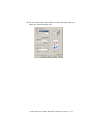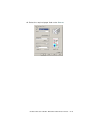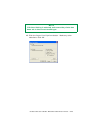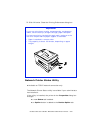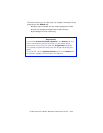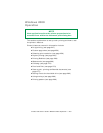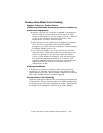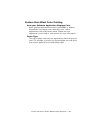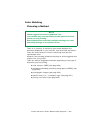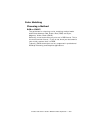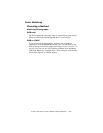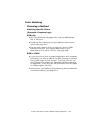C7350/7550 User’s Guide: Windows 2000 Operation • 225
Factors that Affect Color Printing
Monitor Colors vs. Printer Colors
(Differences between the range of colors a monitor or
printer can reproduce)
• Neither a printer nor a monitor is capable of reproducing
the full range of colors visible to the human eye. Each
device is restricted to a certain range of colors. In addition
to this, a printer cannot reproduce all of the colors
displayed on a monitor, and vice versa.
• Both devices use very different technologies to represent
color. A monitor uses Red, Green and Blue (RGB)
phosphors (or LCDs), a printer uses Cyan, Yellow, Magenta
and Black (CMYK) toner or ink.
• A monitor can display very vivid colors such as intense
reds and blues. These cannot be easily produced on any
printer using toner or ink. Similarly, there are certain
colors, (some yellows for example), that can be printed,
but cannot be displayed accurately on a monitor. This
disparity between monitors and printers is often the main
reason that printed colors do not match the colors
displayed on screen.
Viewing Conditions
A document can look very different under various lighting
conditions. For example, the colors may look different when
viewed standing next to a sunlit window, compared to how they
look under standard office fluorescent lighting.
Printer Driver Color Settings
The driver settings for Manual color can change the appearance
of a document. There are several options available to help match
the printed colors with those displayed on screen. These options
are explained in subsequent sections of this User Manual.



